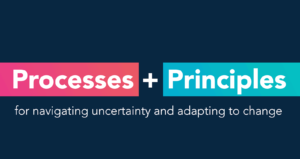Preparation is the new equity issue
The terminal indicator of the American achievement gap is the graduation gap and its cousin the college gap. African American and Hispanic students are twice as likely to drop out of high school than white students and less than half as likely to earn a college degree.
Given the demands of the 21st century economy and society, the college gap stands as the single most outrageous and perilous form of injustice in America today. Historically, the college gap has been a limited access—access to good schools, good teachers, advanced coursework, and the financial access to college. As these issues are slowly addressed, the college gap is as much about architecture as access. Almost two decade into the standards movement, a political reform based on the just, possible, and necessary notion that all students should leave high school prepared for college, work, and citizenship, the 80 year old architecture of the K-12 system remains solidly intact. Our commonly accepted practices, structures, schedules, and assessments continue to sort, select and promote compliant white and Asian students as “college-bound,” while quietly rejecting African American, Hispanic and Native students.
Big comprehensive secondary schools don’t work, that is if we demand more than the traditional measures of success: top students go to top schools and they have pretty good sports teams. Large non-selective secondary schools with any diversity and poverty commonly fail to prepare 80% of their students for college without remediation. They weren’t designed to prepare all students for college, they were designed to sort and select and they do it with uncanny precision. Four sources of inequity—call it institutional racism if you will—are inherent in the architecture of American secondary schools:
- The “comprehensive” curriculum, residual of the differentiated education movement (the last time progressives and business leaders reformed the system), which provides five optional levels of difficulty, multiple paths of least resistance, and promotes isolation, fragmentation, and incoherence.
- The associated and outdated belief that not all students should be prepared for college which allows early and unquestioned differentiation (remedial reading for Blacks, Shakespeare for Whites; basic math for Blacks, pre-calculus for Whites)
- Inequitable funding, the ugly residual of local control and place-based taxes
- The massive structure of most American secondary schools subtly but very effectively excludes families and students that have not had much educational success.
Schools that engage all students in a rigorous, relevant, and coherent course of study and build positive sustained relationships routinely have graduation and college attendance rates over 90%. Affluent American families have long had the choice of small diverse secondary schools that prepare all students for college—private schools, parochial schools, and elite public schools. If we’re serious about leaving no child behind, then every child needs access to schools designed to help every child achieve. Reversing the above sources of inequity are the following four keys to success:
- A choice of coherent, rigorous and relevant courses of college preparation
- The expectation that all students will leave high school having experienced success in higher education, work, and citizenship
- Equitable funding, not just equalized, but adequate need-based funding that followed the student to his/her school of choice.
- Small schools designed around the education trinity–parents, students and teachers (not departments, football and buses)—with powerful sustained adult relationships and redundant systems that support academic success.
Half of the battle in closing the college gap is improving the academic preparation of students of color and students growing up in poverty by creating systems of schools grounded in the belief that all students can and must be prepared for post secondary success, continuous learning in the new workplace, and civic contribution








Doug Roberts
Tom-
One of the great challenges here is the access to high-quality teachers. Much has been written about the barriers to entry for high-quality teacher candidates: salary, antiquated credentialing requirements, etc.
NYC's TEP Charter (www.tepcharter.org) may just prove that if a school/district frees itself of the traditional compensation models achievement gaps close quickly.
As vendors around the nation lick their chops in anticipation of the RTTT money, it would be interesting to see if any states might direct this money to teacher compensation and stipends. I'd love to see a state decide that it's going to prove that by paying salaries competitive with those being paid for entry-level private sector jobs, it can attract high-quality teachers who will stay for longer than the traditional "5-year cliff."